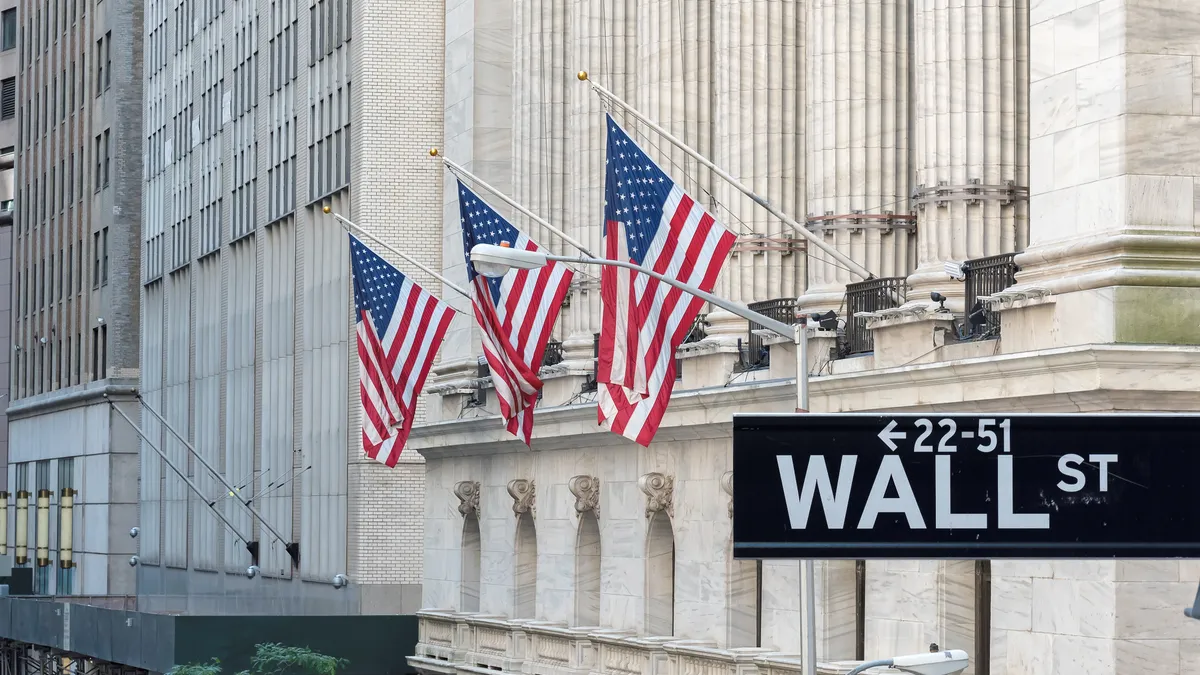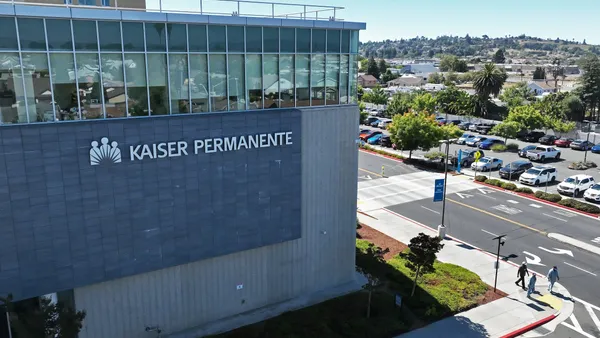Editor’s note: Scott Bowman is a managing director at global strategy firm Clareo and co-founder of The NOURISH Movement, a group focused on improving healthcare through sustainable food.
After five years of operation, Walmart will close its remaining health clinics and virtual healthcare operations around the end of July, citing a lack of profitability.
Although this decision makes financial sense, the retailer can still prove itself as a destination for healthcare needs without vacating the space. My message to Walmart execs before they close Walmart Health’s doors is: Don’t throw out the baby with the bathwater. Join the movement for health through nutritious food, not healthcare services, for your customers.
Consumers have long been in the trenches trying to get a better handle on their health. While much fanfare continues to surround Ozempic and other GLP-1 drugs for their weight loss benefits, their popularity signals a greater crisis about America’s health.
Research shows poor diets are the leading cause of mortality and morbidity. More than 2 in 5 American adults are obese, and 85% of our healthcare spend is related to diet-related health conditions. Central to the problem is our food system that’s optimized for cheap calories that are mass produced at scale and delivered over distance.
Now we need to optimize it for health, and Walmart can play a much bigger role.
Food retailers have attempted to plug the pitfalls in our food system and engage in the food is medicine (FIM) movement with various programs and partnerships. Kroger’s partnership with Performance Kitchen for medically tailored meals and research partnership with Rockefeller and American Heart Association come to mind. Instacart Health’s partnership with Dispatch Health brings targeted nutrition and food assistance for seniors aging in place, leveraging their virtual storefronts, Care Carts and Fresh Funds.
Walmart’s public commitments about nutrition security — like expanding its SNAP access, partnering with Feeding America and Wholesome Wave and more — are all laudable, but more can be done. Participating in healthcare need not equate to operating clinics and administering telemedicine. It can involve nutrition and food, as healthy food is medicine.
Motivated by the desire to return to more natural ways of preventing diet-related disease, the FIM movement is picking up steam. In 2022, the White House Conference on Hunger, Nutrition and Health announced more than $8 billion in private and public sector commitments to end hunger and reduce diet-related disease by 2030, with FIM strategies as one of its pillars. Proponents of the movement are challenging status quo paradigms with calls for broader focus on and funding for produce prescriptions, medically tailored meals, healthy food benefit cards and more.
This is where Walmart can win over consumers lost from its clinic closures — connecting FIM approaches with its core business. After all, Walmart says its mission is “to help people save money and live better.”
To deliver a new kind of innovation in health, here are three prescriptions for the retail giant.
Create continuity of experience and programs around nutrition via pharmacy services, starting with GLP-1s
With its 4,600 pharmacies and wellness services such as health screenings and medication therapy management, Walmart has an unrivaled potential to connect prescriptions to food programs.
One ideal opportunity would be riding the popularity of GLP-1s. Instead of fretting about the impact of GLP-1s on food, the retailer can turn those drugs into a catalyst for food as medicine. There is a strong case for action for food as medicine in an Ozempic world.
It should be noted that a National Community Pharmacists Association survey finds most pharmacies are struggling to stock GLP-1s. It’s a drag on the business due to back orders, low margins and operating costs.
Nevertheless, there is potential to turn an unprofitable transaction to a profitable customer lifetime value by connecting food programs and targeted food funding to GLP-1s. One option is to partner creatively with digital health companies, most of whom lack the food part of food as medicine.
Tap into data to measure and report on healthy food access
Management guru Peter Drucker famously said, “You can’t manage what you can’t measure.” This quote is true when it comes to healthy food access. Walmart can make healthy food sales a reporting metric and build in measures regarding the accessibility to healthy food by state, county and municipality. The company can also base it on the solid foundation of nutrient density.
Tesco’s long-standing commitment to shift to healthier diets has positively impacted 3.3 million consumers, according to the grocer. Retail company Ahold Delhaize demonstrates its commitment to health and sustainability by measuring and reporting healthy sales — one of many reasons why it was recently upgraded to AAA rating on the Bloomberg MSCI Sustainability Global Corporate Index, a leading global standard for measuring ESG risk and exposures.
To date, Walmart’s commitment to nutritious food is mainly focused on donations and philanthropic efforts rather than innovating its core business. However, the national retailer has a data goldmine that it can leverage to supercharge customer programs like Great for You, to drive healthy food purchases at scale. It could even help create an index around nutrition and affordability to accelerate private sector innovation.
Maximize operational scale to accelerate FIM models at retail locations
The FIM movement is seeking to evolve from patient to consumer and from intervention to empowerment. The role of retail is vital in this transition. As I’ve argued before, food CEOs need to expand beyond their interventions like medically tailored meals and produce boxes, as important as those are. We can’t let the produce box become the next pill box.
The convergence of retail data, digital technologies and fintech technologies, such as filtered and guided spend, is paving the way for new horizons in medically tailored groceries and food benefit programs. Walmart stores are hubs in many local communities and can be leveraged to empowerment, skill building, and culinary and lifestyle medicine — all while staying close to its core food business.
Retailers like H-E-B are lighting the way with holistic programs focused on wellness including curated meals, menu planning, integrated nutrition and dietician services. Digital players like Season Health are creating new medically tailored grocery programs, partnering with employers and health plans, tackling GLP-1s with nutrition and integrating payment in digital wallets. Walmart should see these as powerful signals for the future.
Vacating healthcare need not mean vacating a credible agenda for health. It should mean doubling down on the best ways to champion health and nutrition for people to live the highest quality of life.





















